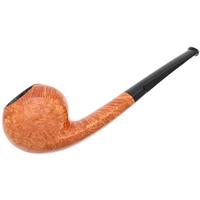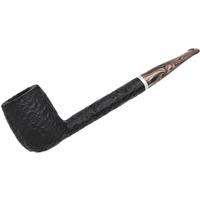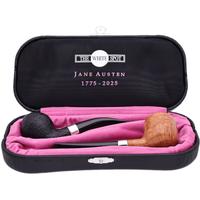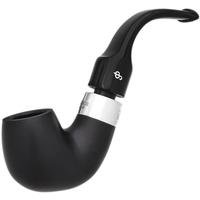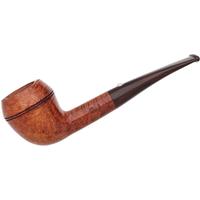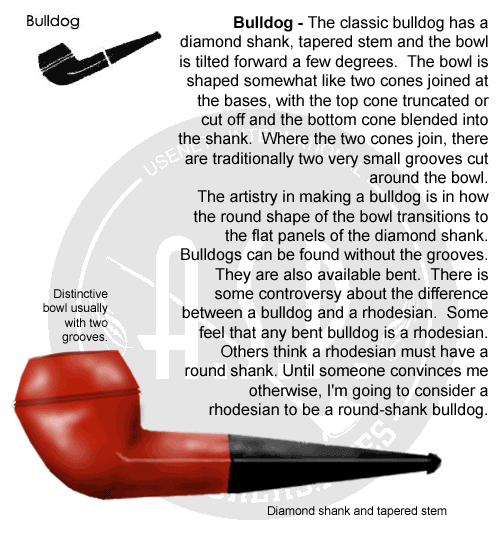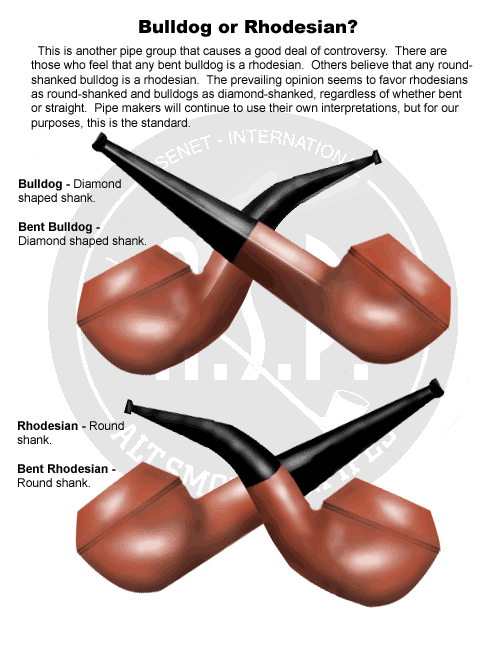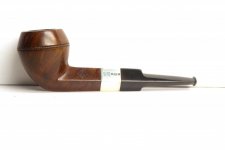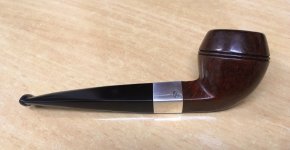It is very distinct from the other bulldog shapes. Thicker and bolder. I really like it.Good for you. I nabbed a squire a few months back. I think it's the most attractive factory-made bulldog on the market with a great bowl capacity.
Beads
- Thread starter buck17
- Start date
You are using an out of date browser. It may not display this or other websites correctly.
You should upgrade or use an alternative browser.
You should upgrade or use an alternative browser.
Yes, they have pins or brads. But mine have all had a tapered edge for a tad bit of friction fit. Of course over a hundered years the friction has lost its snap, annealed in time.Interesting, I've only we've seen caps held in place by pins.
The brads also tend almost fall out because of the damage of time.
One of the things I love about bulldogs is that it was the first design “designed” to be fraised out. It is an example of industrial aesthetics in pipe making. A transitional piece from the age of reason into the age of industrialization, when we looked back to fairy tales, folklores, dreams of dragons and beautiful maidens, while riding trains and ships as large as cities. Art Nouveau, recorded tinny music, the golden age of Gentlemen and maidens while the world turned to mass production and steam.
The channels and beading provide a design element that nicely separates the upper converging plane from the lower expanding plane.
But not all bull dogs have the beading. My 1907 Barling bull dog doesn’t have beading.
Most of the classical canon was developed in France.
The SP article is interesting, if not terribly accurate. For example, the fascination with straight grains dates back to the 1880’s. There are surviving ads touting the development of the straight grain from that period. So interest in grain goes back a long ways.
This makes the most sense. There was a time I didn't care for the bulldog/rhodesian shape. Now, they dominate my collection. Love how they feel in my hand and they smoke great. Given chasingembers tastes, I'd be a lot more concerned if he liked them.
Jose Rubio
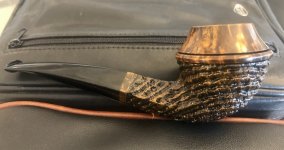
Rad Davis
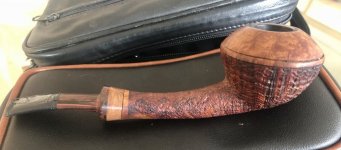
Alden
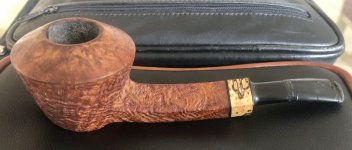
Howell
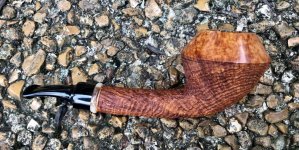
Cermak
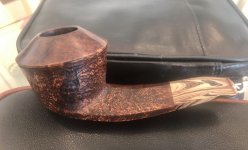
Howell
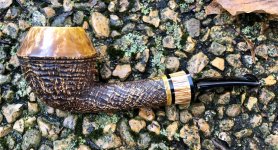
Larrysson
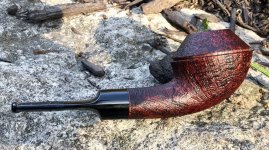
SRV
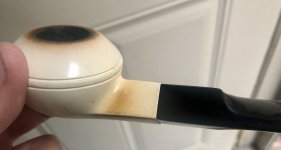
I'm not a fan of the bulldog shape. I generally find it fug ugly. But with the right block the shape can produce something truly magical which is how I've come to own a few of them.
I pretty much have the same opinion. It's an ugly shape to my senses, however every once in a great while, one catches my eye. Kind of like fat girlsI'm not a fan of the bulldog shape. I generally find it fug ugly. But with the right block the shape can produce something truly magical which is how I've come to own a few of them.
The first smoke was very easy going. I love the thickness of this version. Tobaccopipes has it explained as a BullMoose, some sub-category. I’m not sure how many people actually use that term, I just call it a bent bulldog. Anyway, I was expecting to have to learn it a little better because it’s also my first P-Lip. Uh oh, I have mentioned another polarizing pipe development! ? Overall, happy I received one of the good ones. Loving the historical theories around the beads too.
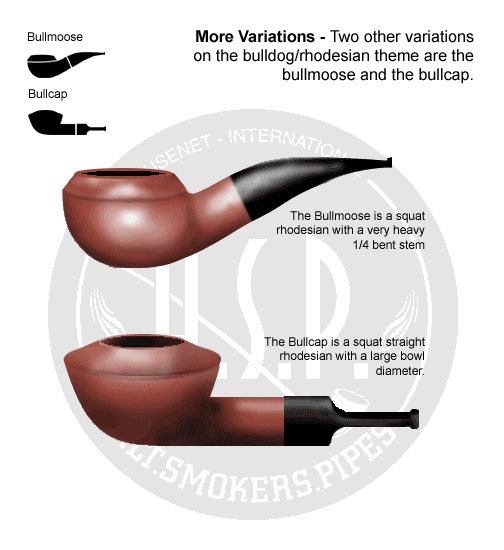
Wow. This is my dream collection here. CheersThis makes the most sense. There was a time I didn't care for the bulldog/rhodesian shape. Now, they dominate my collection. Love how they feel in my hand and they smoke great. Given chasingembers tastes, I'd be a lot more concerned if he liked them.
Jose Rubio
View attachment 93807
Rad Davis
View attachment 93808
Alden
View attachment 93809
Howell
View attachment 93810
Cermak
View attachment 93811
Howell
View attachment 93812
Larrysson
View attachment 93816
SRV
View attachment 93817
Was waiting for you to chime in as I didn’t want to misquote you.One of the things I love about bulldogs is that it was the first design “designed” to be fraised out. It is an example of industrial aesthetics in pipe making. A transitional piece from the age of reason into the age of industrialization
I have a straight textured Excel bought from Dr Grabow two or three years ago which is a squat bulldog without a bead.
While the honorable J. Samuel Weingott did not think much of straight grain.The channels and beading provide a design element that nicely separates the upper converging plane from the lower expanding plane.
But not all bull dogs have the beading. My 1907 Barling bull dog doesn’t have beading.
Most of the classical canon was developed in France.
The SP article is interesting, if not terribly accurate. For example, the fascination with straight grains dates back to the 1880’s. There are surviving ads touting the development of the straight grain from that period. So interest in grain goes back a long ways.
Yeah, but what did HE know?While the honorable J. Samuel Weingott did not think much of straight grain.
The Bulldog pipe was developed at roughly the same time as Olympic ski jumping was taking off as an amateur sport and is a result of the pipe makers trying to capitalize on the growing sport. Jean Claude Romay of the Chapuis-Comoy pipe company in St. Claude France was a young pipe designer looking to make his name in the pipe carving industry is credited with being the one who initially designed the basic shape. Billiards being the standard shape of the day blocked the skiers vision too much and caused embers to be sprayed right in his eyes. Advertising being what it is, saw this as a branding nightmare. After all, there is no point in putting your name on the pipe if it's going to cause accidents. So Romay set about to solving this problem. The idea was to give the pipe a flatter overall profile than your standard billiard. As the sport moved ahead so did the pipe. After a few initial trials, the straight was abandoned by skiers in favor of the bent. They found the bent bulldog much easier to see over so they could plan their landings.. The line around the waist was originally designed to aid in the steering of the skier. But like so many design details, it proved itself aesthetically rather than functionally. Sadly, ski jumping and pipe smoking parted ways in 1887 after an athlete in Grenoble France dropped his lit pipe from the ski lift down on to the only exposed wooden portion of the jump and burned it to the ground.
I like fat girls as much as I like a good carved doggieI pretty much have the same opinion. It's an ugly shape to my senses, however every once in a great while, one catches my eye. Kind of like fat girls.
Darn Jesse ; he knew how to carve a decent pipe with a beautiful certainty. So he knew more than some of us, or some of us combinedYeah, but what did HE know?
The family Era Weingott pipes I own, I hold in high esteem.
It was not about aesthetics, he believed straight grain briar to be more vulnerable to cracking and I understand his meaning.
But what do I know ?
Straight grains ARE much ore susceptible to cracking. Point of fact, pipes with mixed grain, the sort that collectors tend to ignore, are the most durable.Darn Jesse ; he knew how to carve a decent pipe with a beautiful certainty. So he knew more than some of us, or some of us combined
The family Era Weingott pipes I own, I hold in high esteem.
It was not about aesthetics, he believed straight grain briar to be more vulnerable to cracking and I understand his meaning.
But what do I know ?
Interesting thing about a bulldog with straight grain is... WTF?
It has four sides, which from the stem to the bottom cone of the bowl is 180 degrees from each other. Even if you got the bottom cone to have straight grain, the diamond shank and the top cone would not be. It would seem to me that a bulldog shape carved with the grain on the side would be just as likely to depict straight grain on at least one side of the diamond shank and possible the rim as well... or maybe just the rim?
It has four sides, which from the stem to the bottom cone of the bowl is 180 degrees from each other. Even if you got the bottom cone to have straight grain, the diamond shank and the top cone would not be. It would seem to me that a bulldog shape carved with the grain on the side would be just as likely to depict straight grain on at least one side of the diamond shank and possible the rim as well... or maybe just the rim?



